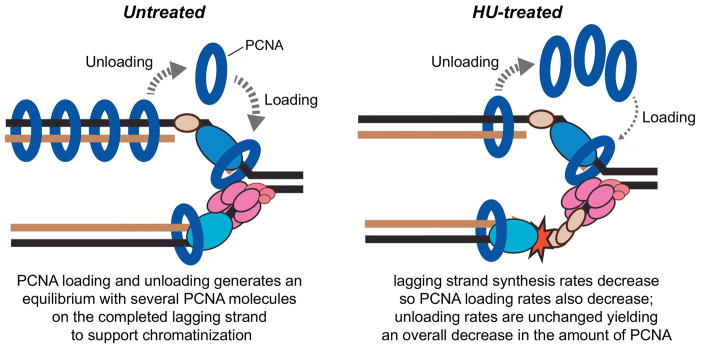Figure 2.

Fork stalling causes a decrease in PCNA levels associated with replication forks. After an Okazaki fragment is completed and chromatin is deposited, PCNA is unloaded from the lagging strand. When a fork is elongating normally, PCNA is rapidly placed back onto the lagging strand to support generation of a new Okazaki fragment and continued DNA synthesis. When the fork stalls due to nucleotide depletion, PCNA is no longer loaded since new Okazaki fragments are not being initiated rapidly. The PCNA that was already on the lagging strand is unloaded so the total amount of PCNA at the fork is less. This model predicts that the amount of PCNA at forks DNA should be higher in normal replicating cells than in HU-treated cells. This is exactly what is observed when the amount of PCNA associated with the nascent DNA is examined by iPOND [56].
